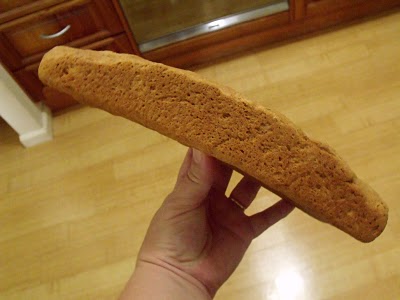Troubleshooting Bread Making Problems

Making homemade bread is almost as fun as eating a thick, warm slice smothered in creamy butter or drizzled with honey. But what happens when your bread making fun has trouble; little problems that affect the taste and texture or outcome of your bread.
It happens, folks – to everyone – at some point in their bread making career. If you’ve had trouble in the past, check out our problem-solving pointers to see what may be going wrong. You’ll be back to bread making success in no time at all.
If your bread did not rise well or not at all
- Yeast was not fresh.
- Water was too hot and killed the yeast.
- Dough was kneaded too much or not enough. Knead only until the dough does not tear easily when stretched.
- Oven was not hot enough. To check your ovens accuracy, place an oven thermometer in the center of the oven and turn it on to 350°. Check the thermometer after 20 minutes. If it’s not within 5 degrees of 350°, you’ll need to adjust the oven’s temperature control.
Bread is heavy and coarse
- Too much liquid or not enough flour in the dough. When mixing dough, start with a minimum amount of flour until the dough reaches desired consistency.
- Dough was allowed to rise for too long. Proper rising helps the development of the bread texture. Let dough rise in a warm (80° to 85°), draft-free area.
- Oven temperature was too low.
Bread is dry and crumbly
- Too much flour was used.
- Dough was allowed to rise too long.
Bread is doughy on the bottom or has slightly gummy texture
- Bread was under baked. Test for doneness at the minimum recommended baking time. Bread is done when it’s golden brown and sounds hollow when tapped on the bottom. Or insert an instant-read thermometer in the thickest part of the loaf. The bread is done when the thermometer reads 200°.
- Bread stayed in the pan too long after baking. Remove breads from pans and cool on wire racks.
Loaf sinks in the center
- Dough rose too long during the second rise time in the pan.
Bread has large holes
- Dough was not kneaded enough.
- Air was not compressed out of the dough during shaping.
Bread crumbles when cut
- Too much flour.
- Dough was kneaded too much or not enough.
- Dough was allowed to rise too long or not long enough.
- Oven temperature was too high.
More Bread Making Tips:
Use butter, stick margarine or shortening rather than light or whipped butter, diet spread or tub margarine.
Aluminum baking pans, the kind with dull finishes rather than dark or shiny, will produce loaves with golden brown crusts. Glass or dark finished pans will produce darker crusts.
Bread needs good air circulation when baking. Leave at least an inch of space between pans and the sides of the oven.
Armed with these simple troubleshooting solutions, you’ll be back to making great bread your family will love.
Please me with possible solutions to this problem: when ever I slice my baked bread, particle or crumbs drop alot when I pick a slice. The crumbs drop so much as if the loaf was baked days back.
Thank you
good tips, but my bread making problem isn’t addressed; would appreciate your expert opinion.
Everything looks good until the break goes in the oven. When it comes out there are long stretch marks just under the crust, usually one side, but have had both side involved. First thought was oven too hot; found that it was 10 degrees high and adjusted accordingly, but problem not solved.
Thanks for any help.
Jerry